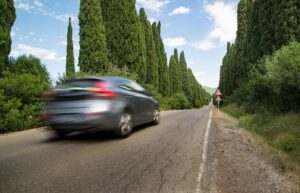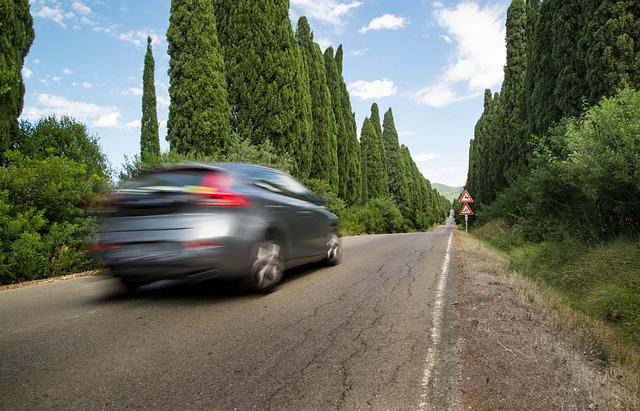Can you take a clean image of the number plate using an automatic number plate identification camera travelling at 81 mph?
Automatic Number Plate Recognition
The Automatic Number Plate Recognition (ANPR) reads vehicle licence plates using optical character recognition on images. They may use existing closed-circuit television (CCTV) or traffic law enforcement cameras or those designed especially for the job. They are used by many police departments and government agencies to monitor traffic activities and to collect tolls electronically on highways.

Different terms are used around the world to describe automatic licence plate capture and decoding. In Europe, it is frequently referred to as Automatic Number Plate Recognition (ANPR). In the USA, it is known as Automatic License Plate Recognition (ALPR or LPR).
A camera and computer are the two main components of an ANPR CCTV system. The computer automatically “reads” the succession of images the camera captures of a passing vehicle to record the registration number.
There aren’t many security cameras that can capture a clear image of a target vehicle when it is moving so fast. The effectiveness of an ANPR application in capturing vehicles moving at a high speed depends on several factors.
Shutter Speed
The shutter speed plays a crucial role in capturing high-quality images. When a vehicle is moving at a high pace, motion blur can be avoided by using a shutter speed of 1/500s.
Exposure times of 1/1750 s or 1/2500 s are preferable for 120 km/h speeds. In start-stop applications or at slower speeds, the camera’s frame rate can be decreased, which lowers the processing power needed for ANPR.
Axis Q1700-LE
The 18-137 mm optical lens and shutter speeds of 1/66500 s to 1 s on the Axis Q1700-LE Licence Plate Camera is an ideal solution for capturing the licence plates of moving vehicles.
BOSCH DINION IP starlight 6000
The above BOSCH camera model with a shutter speed of 1/15000 s includes firmware that has been fine-tuned to enable them to produce images with strong contrast and low noise that are acceptable for processing licence plates.
Resolution
The ideal range for camera resolution is 1 to 2 MP. Lower resolutions don’t give the characters on a licence plate enough pixel density or picture clarity. More intricate licence plates, and particularly those using character sets other than the Latin character set, make this more obvious.
The minimum requirement is 20 pixels for character height. Higher resolutions increase the processing burden on the CPU and necessitate additional processing power, which slows down the recognition of licence plates and may result in missed detections.
Infra-Red Images
If only licence plate identification is required, an infrared (IR) camera with sufficient IR illumination (typically 850nm) is sufficient for day and night operation in all situations. Additional lighting, such as white LED floodlights, will be needed in applications with low lighting conditions.
Zoom lens
To be able to recognise the characters from the licence plate, characters must have a minimum character pixel height of 20 pixels. The selection of the necessary zoom lens will be directly influenced by the distance between the camera and the licence plate at the detection/capture zone’s entry and exit points, so that the camera may be able to accomplish this character height of 20 pixels.
In conclusion, a top-notch ANPR programme and an equally top-notch CCTV design are required for the highest quality images to catch the number plate of a speeding car.
To read more articles like this, sign up for our newsletters. Follow us on social media for more details on news, publications, and job openings in the business.
Do you want to train your engineers? We offer practical training courses in fire alarms, intruder alarms, access control systems, and CCTV camera installation. Our courses are designed and accredited by leading awarding bodies benchmarking them against Ofqual level 3 standards.
Call us today 03330064005.

